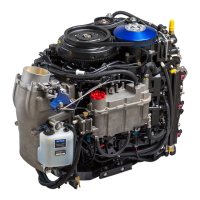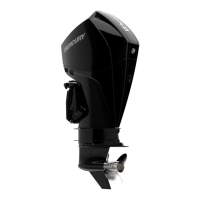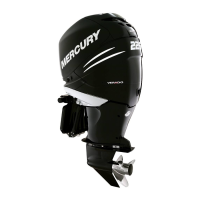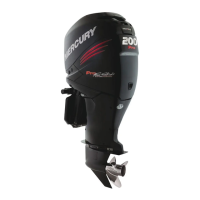Test the fuel system inlet vacuum as described following. The fuel lift pump can be tested by measuring its ability to create
vacuum. Create an artificial restriction in the fuel supply line to observe how much vacuum the fuel lift pump produces. The
vacuum will build slowly as the engine is consuming fuel. The fuel lift pump should be capable of achieving a vacuum of 33.68
kPa (10 in. Hg) (4.91 psi).
Testing Fuel System Inlet Vacuum
!
CAUTION
Failure to release pressure from the fuel system will result in fuel spraying out, which can cause a fire or explosion. Allow the
engine to cool completely and release all fuel pressure before servicing any part of the fuel system. Always protect eyes and
skin from pressurized fuel and vapors.
1. Separate the engine fuel line from the boat fuel line at the engine fuel inlet connection (inside the cowling).
2. Install a T‑fitting on the boat fuel line.
3. Install a clear fuel line on the opposite side of the T‑fitting. Connect the clear fuel line to the engine fuel line.
4. Install a fuel vacuum gauge (obtain locally) on the T‑fitting.
5. Clamp all fuel line connections securely to prevent vacuum leaks.
6. Start the engine and observe the clear fuel line for air bubbles. If the engine does not start, use the CDS G3 diagnostic
interface tool.
7. At maximum fuel flow (full‑throttle engine operation), the vacuum gauge reading should not exceed the listed specification.
a - Engine fuel line
b - Clear fuel line
c - T‑fitting
d - Boat fuel line
Description Specification
Maximum fuel system inlet vacuum (see NOTE) 10.16 kPa (3.0 in. Hg) (1.47 psi)
NOTE: This maximum value applies only to measurements taken at the engine, not to measurements taken elsewhere in the
boat. The maximum value is with the fuel tank at half volume.
A restriction in the fuel system will result in a vacuum reading higher than the allowable maximum. Some common causes of
excessive vacuum include:
• Restricted antisiphon valve
• Restricted or malfunctioning primer bulb
• Kinked or collapsed fuel hose
• Plugged water‑separating fuel filter (in the boat)
• Restriction in the fuel line through‑the‑hull fitting
• Restriction in the fuel tank switching valves
• Plugged fuel tank pick‑up screen
High‑Pressure Fuel Pump
The high‑pressure fuel pump and fuel lift pump are inside the fuel supply module. The high‑pressure fuel pump cannot be
electrically tested separately from the fuel lift pump when installed as part of the fuel supply module assembly. The
high‑pressure fuel pump can be tested for operation electrically with the CDS G3 diagnostic interface tool.
CDS G3 Interface Kit
8M0138392
There is no logic in the engine control module to know if the high‑pressure fuel pump is functioning or not. No fault will be set if
the high‑pressure fuel pump fails.
1. Connect a fuel pressure gauge to the fuel rail Schrader valve.
Fuel Pressure Gauge Kit
91‑881833A03
a
b
c
d
4439
Troubleshooting and Diagnostics
90-8M0146617 eng JULY 2018 © 2018 Mercury Marine Page 7B-3

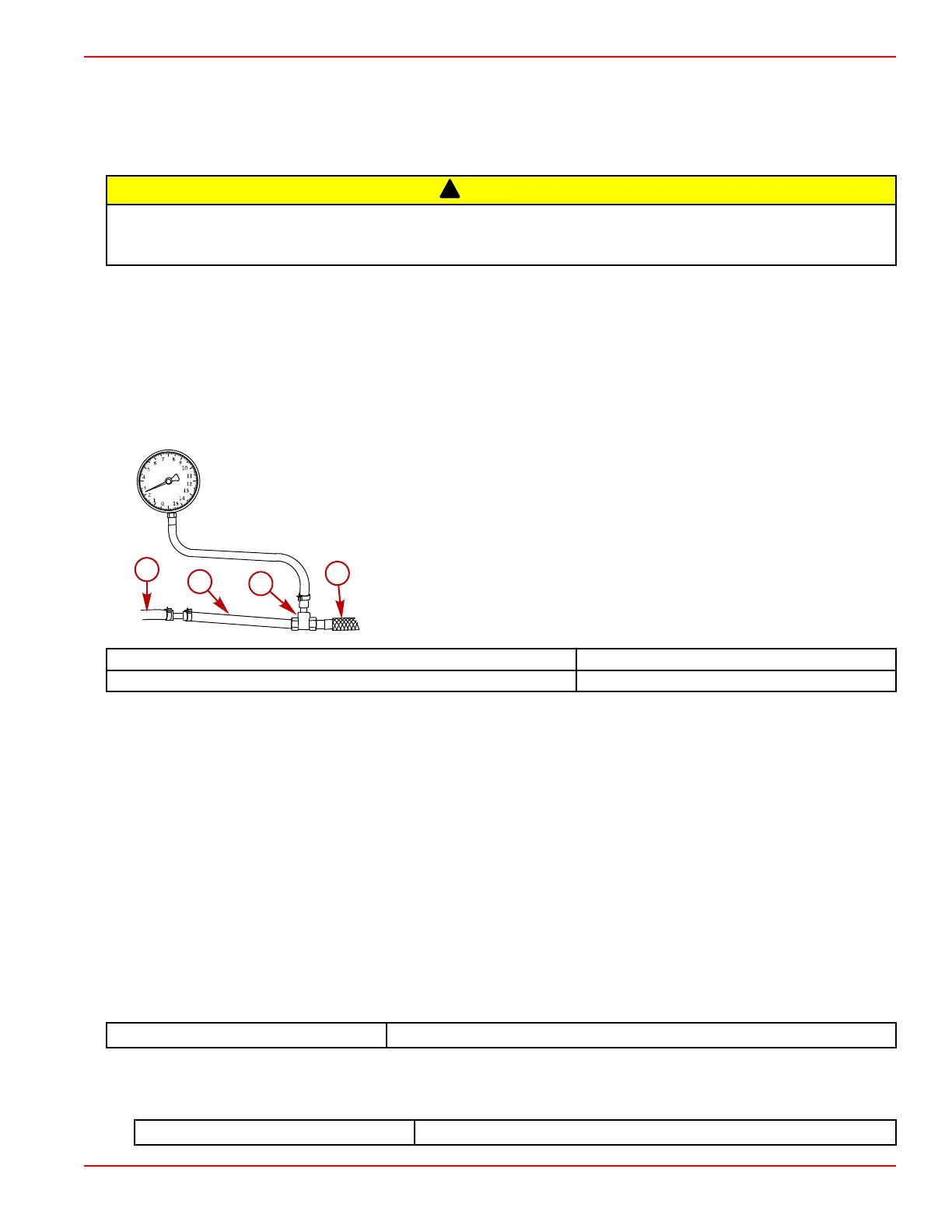